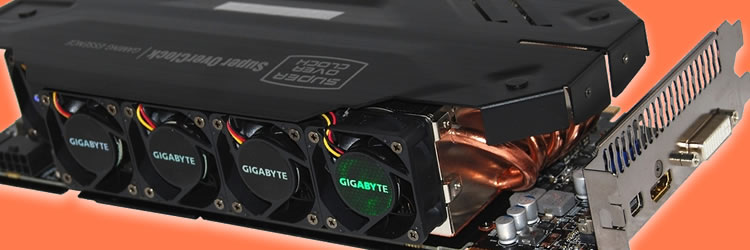Final Thoughts
Gigabyte's Radeon HD 7970 SOC takes air-cooling to an obnoxious level and many enthusiasts will argue it's too large, too loud, too heavy, too expensive and simply too impractical. All of those points are valid, yet we don't mind. The way we see it, the HD 7970 SOC is meant to be all of the above. It's supposed to be the most extreme HD 7970 money can buy, and there's no denying it accomplished that feat.
The card spans 11.4" (29cm), but why should you care? Most enthusiast cases can handle that with room to spare – though it also occupies three expansion slots, which could be a concern depending on your motherboard's layout and the number of expansion cards you need.
Surprisingly, the SOC was fairly quiet when gaming until we cranked the settings up to 1.3v and 1.26GHz, at which point it was about equal to the HD 7970 GHz Edition. There is at least one glaring weakness on this front, however: the SOC uses 40mm fans that have to spin pretty hard to keep the card cool and they aren't exactly known for their long lifespan.

The SOC's 3.5lb body was a non-issue. We didn't spot any PCB flex, which is common in cards that weigh half as much. You can likely thank the rear-mounted aluminum heat spreader for this, as it distributes the load well.
All told, the card's weakest points are also its strongest if you intend to overclock heavily, which is precisely what the SOC is designed for. Although we arrived at a maximum overclock of 1.26GHz, this should only be used as a rough guide as seasoned overclockers may fare better.
Gigabyte expects the Radeon HD 7970 SOC to become available in early August and we believe it will retail for around $530. If this estimate is accurate, the 7970 SOC will be a bargain hunter's nightmare, costing 20% more than the standard Gigabyte 7970 OC. But for those who appreciate the excessive side of computing, the HD 7970 SOC certainly delivers.
score
Pros: The most extreme HD 7970 money can buy. Up to 19% performance gains compared to a standard HD 7970. Fairly quiet when gaming at its default settings. Solid overclocking abilities and runs cooler than AMD's reference design.
Cons: Occupies three expansion slots. Uses 40mm fans that have to spin pretty hard to keep the card cool and they aren't exactly known for their long lifespan. Expected price.
